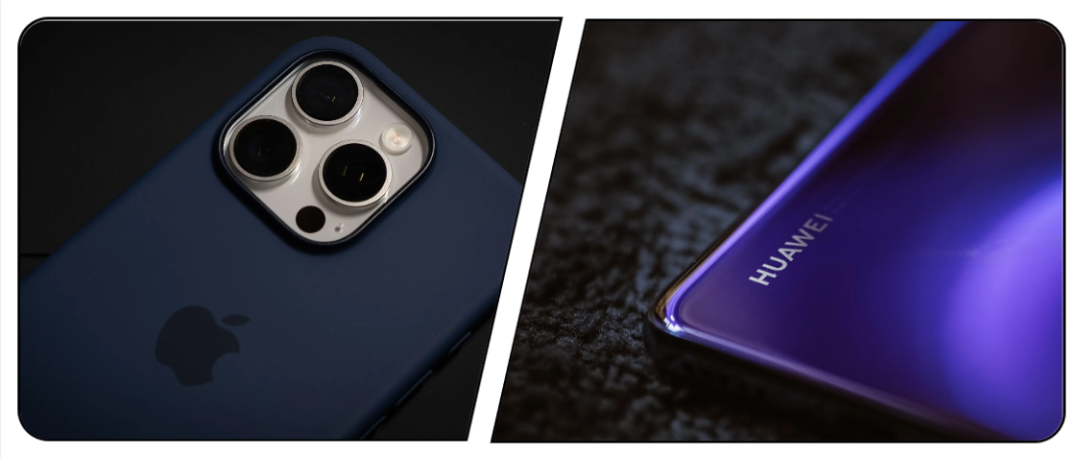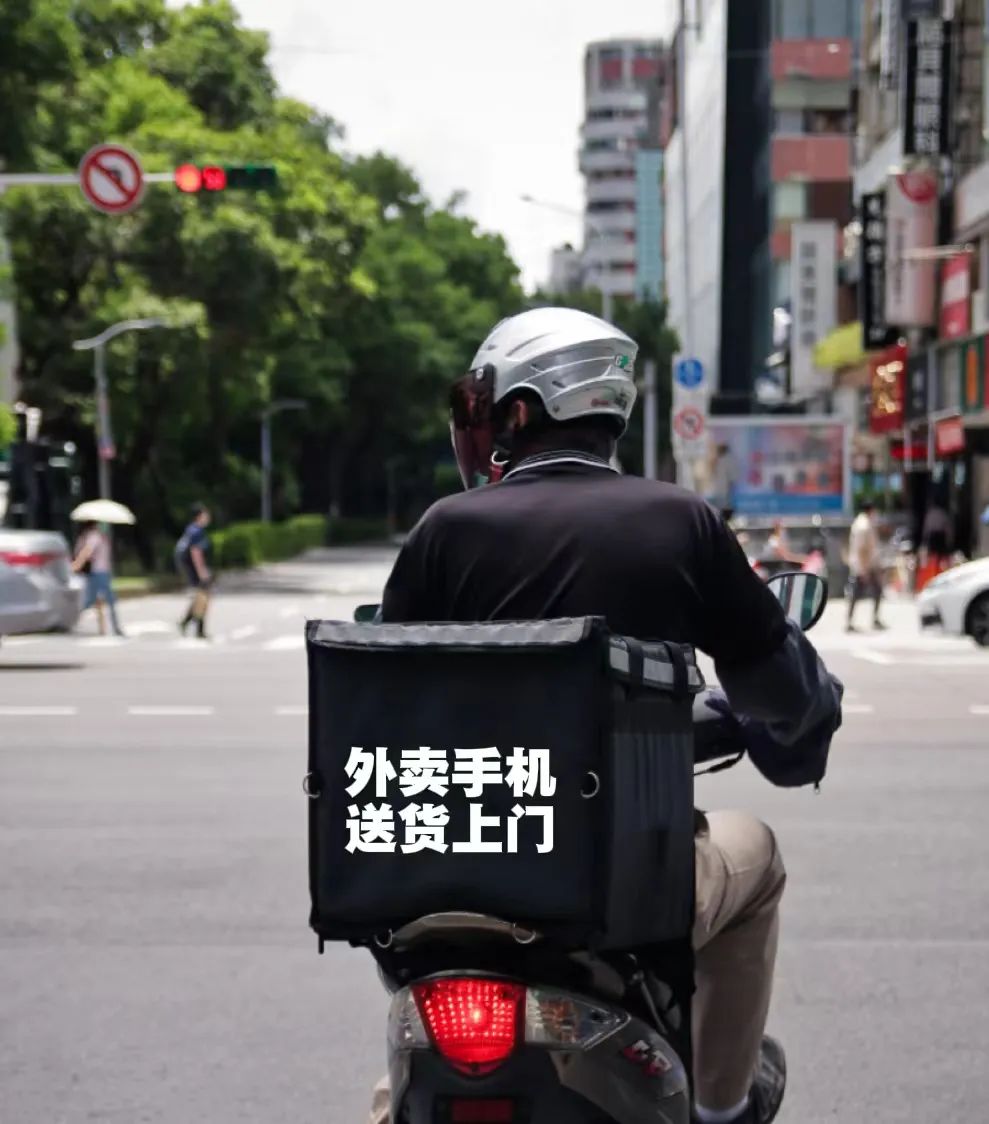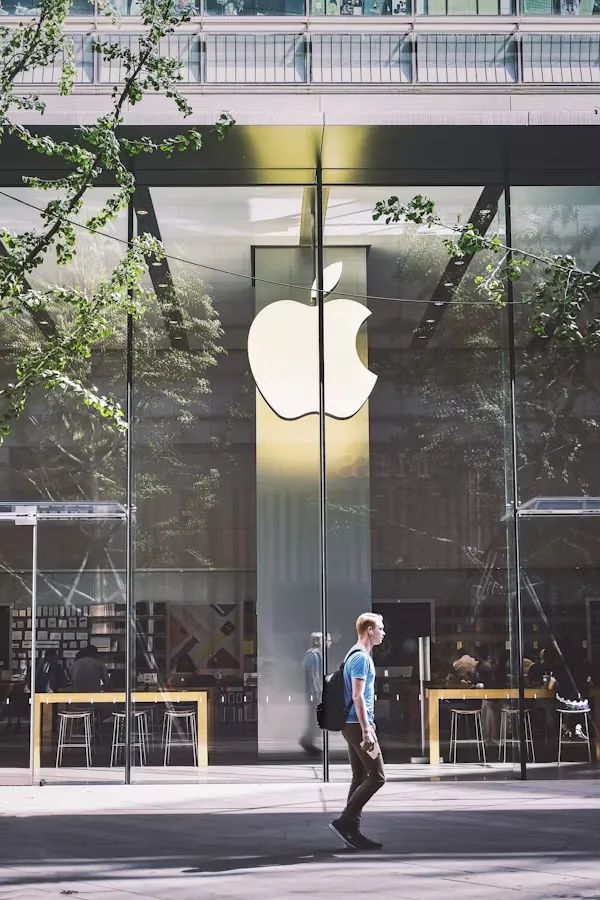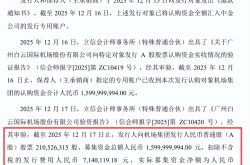Consumer electronics, competing for the "back seat" of delivery riders
![]() 09/26 2024
09/26 2024
![]() 523
523
Written by Wu Xianzhi
Edited by Wang Pan
In September, the annual release of new iPhone models became especially lively due to the Huawei Mate XT Masterpiece.
This battle for the top spot in the high-end smartphone market reflects the two distinct product directions of Huawei and Apple. Due to the overwhelming pre-sales and the prevalence of scalpers, Huawei's foldable new model takes on a strong luxury vibe.
The biggest change in the iPhone 16 series comes from the A18 chip and AI capabilities. Given the current performance overflow, the performance enhancement brought by the A18 chip is not readily noticeable to consumers, and Apple Intelligence in China is still in a "futures" state. Fortunately, Apple's products are mature, and the addition of "Camera Controls" may offer a new way of user interaction.
On the surface, it's a confrontation between Huawei and Apple, but beneath the surface, both manufacturers are also engaged in a channel battle, with one major battleground being instant retail.

Apple's collaboration with instant retail platforms is nothing new. For example, nearly 7,000 Apple Authorized Resellers have joined Meituan Flash this year, with the number of stores supporting pre-sales doubling from last year. The number of Huawei Authorized Experience Stores on Meituan Flash surged from over 1,000 stores in 62 cities last year to over 4,300 stores in 343 cities. In addition to Huawei and Apple, smartphone manufacturers such as OPPO, vivo, Xiaomi, and Meizu are also continuously strengthening their collaborations with instant retail platforms.
With consumer electronics as the entry point, the dimension of instant retail has gradually transcended mere timeliness, embracing more possibilities.
How did the trend of "delivery smartphones" emerge?
Before 2020, instant retail was still in its infancy, marked by two representative events.
The first was the opening of a pop-up store by Meizu around Christmas 2018 in Guangzhou Panyu Wanda Plaza, which successfully marketed the novel concept of "delivery smartphones." The second was the launch of iPhone 11 the following year, when a user in Xiasha, Hangzhou, became the first in China to receive their new phone after ordering on Tmall and having it delivered by Ele.me.
In 2020, instant retail experienced a boom as platforms discovered the connection between new product launches and instant delivery. Both Meituan and Ele.me handled the launches of iPhone 12, Huawei Mate 40, and Huawei P40 that year. Instant retail, represented by Meituan and Ele.me, entered the stage of "instant delivery" development that year.
A year later, with the release of iPhone 13, Meituan expanded its reach to the supply side. Nationwide, a total of 498 Apple Authorized Resellers in 117 cities joined Meituan, allowing customers to receive their new phones within an hour if they managed to snag one online within a 10-km radius. "Hourly delivery" has now become a standard feature for new platforms venturing into instant retail.
2022 marked a turning point in the exploration of new smartphone launches in the intersection of consumer electronics and instant retail, marked by platforms expanding their supply and inventory. For example, JD Daojia leveraged its 3C e-commerce experience from JD.com to become the only instant retail platform with pre-sale privileges for Apple products.
This may seem similar to the collaboration between Tmall's Apple flagship store and Ele.me three years ago, but there are fundamental differences. Back then, Ele.me merely handled the delivery after customers placed orders on Tmall's Apple flagship store. Three years later, JD Daojia attempted to complete the closed loop of inventory and fulfillment, allowing customers to place orders on JD Daojia and receive local delivery.
Meanwhile, Meituan has just completed a strategic upgrade, shifting from "Food+Platform" to "Retail+Tech" with retail as the focus. That year, over 1,000 Apple Authorized Resellers in more than 200 cities joined Meituan, and the growth in supply and business maturity enabled Meituan to shorten delivery times from one hour to half an hour and introduce installment services.
To reinforce the idea of "delivery smartphones," Meituan even deployed drone deliveries, setting a record of 5 minutes and 56 seconds for the first delivery of an iPhone 14.
Last year, the competition among Meituan Flash, Ele.me, and JD Daojia for new smartphone launches continued. The most notable feature of this stage was the shift from focusing on delivery times to focusing on supply capabilities. Combining data from all three platforms, the number of Apple Authorized Resellers joined in 2023 was nearly 5,000 on Meituan Flash, over 4,600 on JD Daojia, and nearly 3,000 on Ele.me.

Not only has the number of authorized stores joining continued to grow, but coverage has also expanded from higher-tier to lower-tier cities. According to Meituan Flash data, among the platform's nearly 5,000 stores, 30% are located in tier-one and tier-two cities, 20% in tier-three cities, and the remaining half in tier-four and below cities.
As of last year, multiple interactions between instant retail and consumer electronics had established the concept of "delivery smartphones," but two discrepancies remained: how to address the mismatch between offline store inventory and online demand, and how to narrow the price gap between instant retail and e-commerce promotions over a month later – e-commerce platforms had already hinted at pre-sale orders and Double 11 price adjustments earlier.
This year, as hourly delivery has become standard for new phone launches, instant retail platforms have continued to grow their network of affiliated stores. For example, nearly 7,000 Apple Authorized Resellers have joined Meituan Flash, covering 2,000 counties, districts, and cities. In terms of benefits, thanks to the introduction of the Supernova membership system, customers who purchase new phones on Meituan will also receive Supernova membership benefits for dining, entertainment, and other local consumption, gradually making instant retail platforms competitive in new product benefits.
Why is the transformation of consumer electronics channels necessary?
The ongoing resonance between smartphones and food delivery is driving the integration of consumer electronics and instant retail in various aspects.
According to the "Instant Retail Consumer Electronics Industry White Paper" released by iResearch in March this year, consumer electronics categories have experienced rapid growth in the instant retail market over the past three years. It is estimated that the compound annual growth rate from 2021 to 2026 will reach 68.5%, and the scale of the instant retail consumer electronics industry will exceed 100 billion yuan by 2026.
During the same period, domestic smartphone channels have been oscillating between a 70-30 and 60-40 split between online and offline sales. Since instant retail is compatible with both e-commerce and traditional offline channels in terms of its model, it can reap the dual benefits of price increases in online channels and improved store services in offline channels.
Online e-commerce and offline channels each have their limitations. Surveys show that nearly 40% of consumers believe that express e-commerce has complex discount mechanisms and inconvenient return and exchange policies, and some platforms do not fully align with brand customization services. Fifty percent of consumers find that offline stores have high prices and incomplete product offerings, issues that are exacerbated during new phone launches.
Instant retail, on the other hand, offers advantages such as a complete range of new products, fast shipping, and convenient returns and exchanges, while also incorporating promotional tactics similar to those of e-commerce and short video platforms. For example, during last year's Double 11, Lenovo's four-hour livestream on Meituan Flash accounted for 44.8% of the merchant's total daily transactions.
From user characteristics, personas, and trends, we can further see the strong affinity between instant retail and consumer electronics.
In terms of user characteristics, the main demographic for instant retail digital products is young people, with Generation Z accounting for up to 48% of Meituan Flash's user base. Young people's consumer behavior is also characterized by strong "linked" consumption habits, such as purchasing accessories along with smartphones, computers, digital products, and home appliances. This feature aligns well with the "all-in-one" ecosystem of major consumer electronics manufacturers.

Notably, despite the increasing replacement cycle of smartphones, the annual phone replacement rate through instant retail channels reaches 8%, significantly higher than the 4% of non-instant retail channels. Moreover, over 70% of users express a willingness to repurchase through instant retail channels.
For smartphone manufacturers, especially offline stores, the young consumers behind instant retail represent pure incremental demand. In this scenario, the average per capita consumption is 5,579 yuan, the highest among all scenarios. For these consumers, instant retail satisfies their desire for novelty and convenience.
Beyond the maturity of consumer mindsets, instant retail has also evolved from a rigid to a non-rigid need, shifting from an emergency to a normalized demand, essentially providing a new consumption scenario.
Emergency situations, business trips, and social gift-giving are currently the three primary drivers of instant retail. With the entry of brands like Huawei, Honor, Xiaomi, OPPO, and Vivo, and their use of instant retail as a platform for new product launches, rushing to get the latest products and hunting for deals during promotions have also become typical instant retail consumption scenarios.
In these high-potential scenarios, instant retail primarily expands channels and traffic resources for physical stores. According to estimates, instant scenarios such as promotions, new product launches, and gift-giving consumption can bring potential growth spaces of 17%, 20%, and 16%, respectively.
Furthermore, the diverse categories of consumer electronics require manufacturers to build hardware ecosystems. Consumers' instant needs naturally extend from food, daily necessities, general merchandise, to consumer electronics, and can also spread from smartphones to headphones, AR/VR, PCs, and other categories.
"Building a House" on Instant Retail
Over the past five years, "grabbing the latest deals via delivery" has gradually become the norm, and the integration of consumer electronics and instant retail has evolved from mere delivery to comprehensive integration.
The most notable change is the continuous expansion of the supply side. Taking Apple Authorized Resellers on Meituan as an example, there were initially 498 stores in 117 cities nationwide in 2021, concentrated mainly in tier-one and tier-two cities. This year, the number has grown to nearly 7,000 stores, covering even more remote towns and villages. This includes supermarket brand stores, small township stores, third-party authorized points, and even operator stores, all of which have entered the supply pool of instant retail.
The expansion of the supply pool has, to a certain extent, alleviated the issue of insufficient inventory at individual stores during new product launches. One mobile phone channel distributor once mentioned that they operate more than ten stores, and during flagship phone launches, there are often disparities in sales among different stores. "Supermarket stores sell out in a minute, while non-supermarket stores often have ample inventory, making it challenging to coordinate redistributions."
Instant retail acts as an advance for stores, providing a flexible channel through its fulfillment methods, thereby alleviating differences in sales pace among different stores.
As channels shift on both the supply and demand sides, instant retail platforms are also accelerating this transition with significant resources and marketing tactics. For example, Meituan Flash previously offered Supernova membership benefits worth 16 months with the purchase of a new phone. Users can redeem these benefits monthly for local consumption scenarios such as food delivery, food group-buying, hotel stays, leisure activities, and daily necessities on the platform.
Beyond building a membership system, instant retail offers much more. Although consumer electronics falls under the retail industry, it requires more offline services than fast-moving consumer goods. Building on local fulfillment, platforms can also offer services such as returns, repairs, and resales, thereby extending the sales radius and further expanding the service radius for consumer electronics manufacturers.

Xu Xiu, an employee at an Apple Authorized Reseller in Beijing who has worked at two stores, witnessed how instant retail platforms' coupon distribution drove rapid sales growth at the stores. She said, "The company is placing increasing importance on online sales and has performance indicators for packaging and platform ratings for deliveries."





